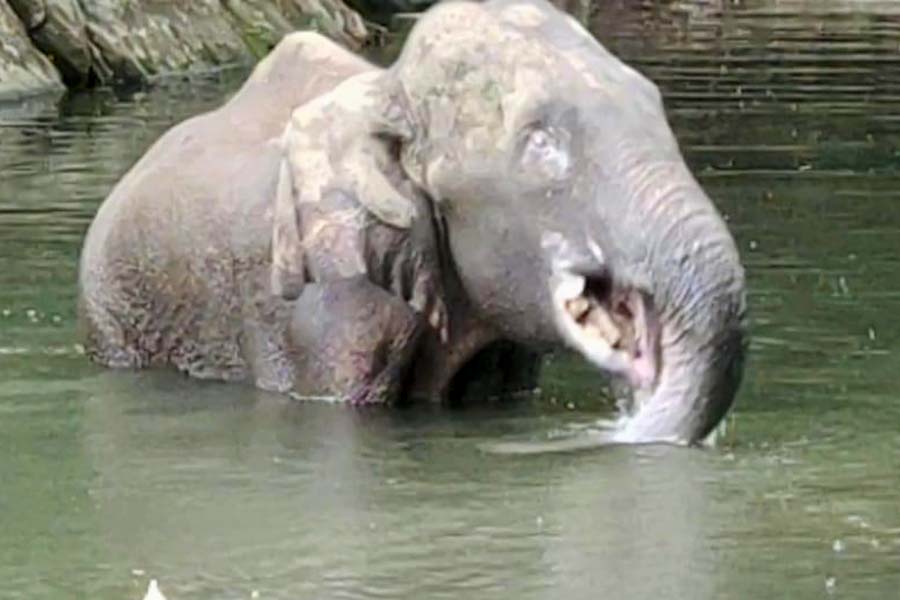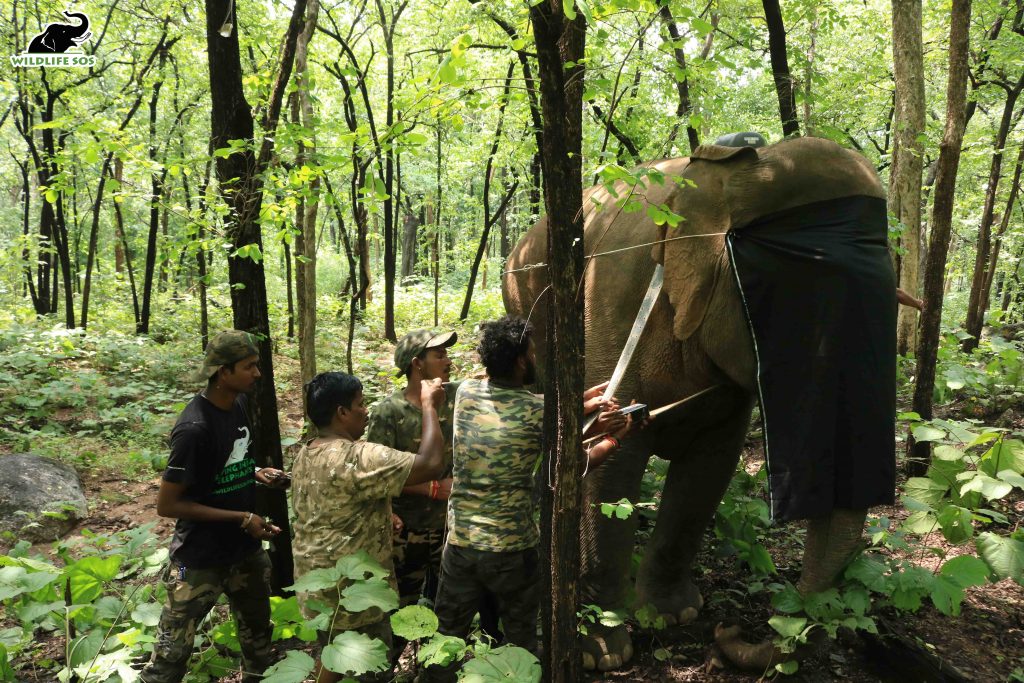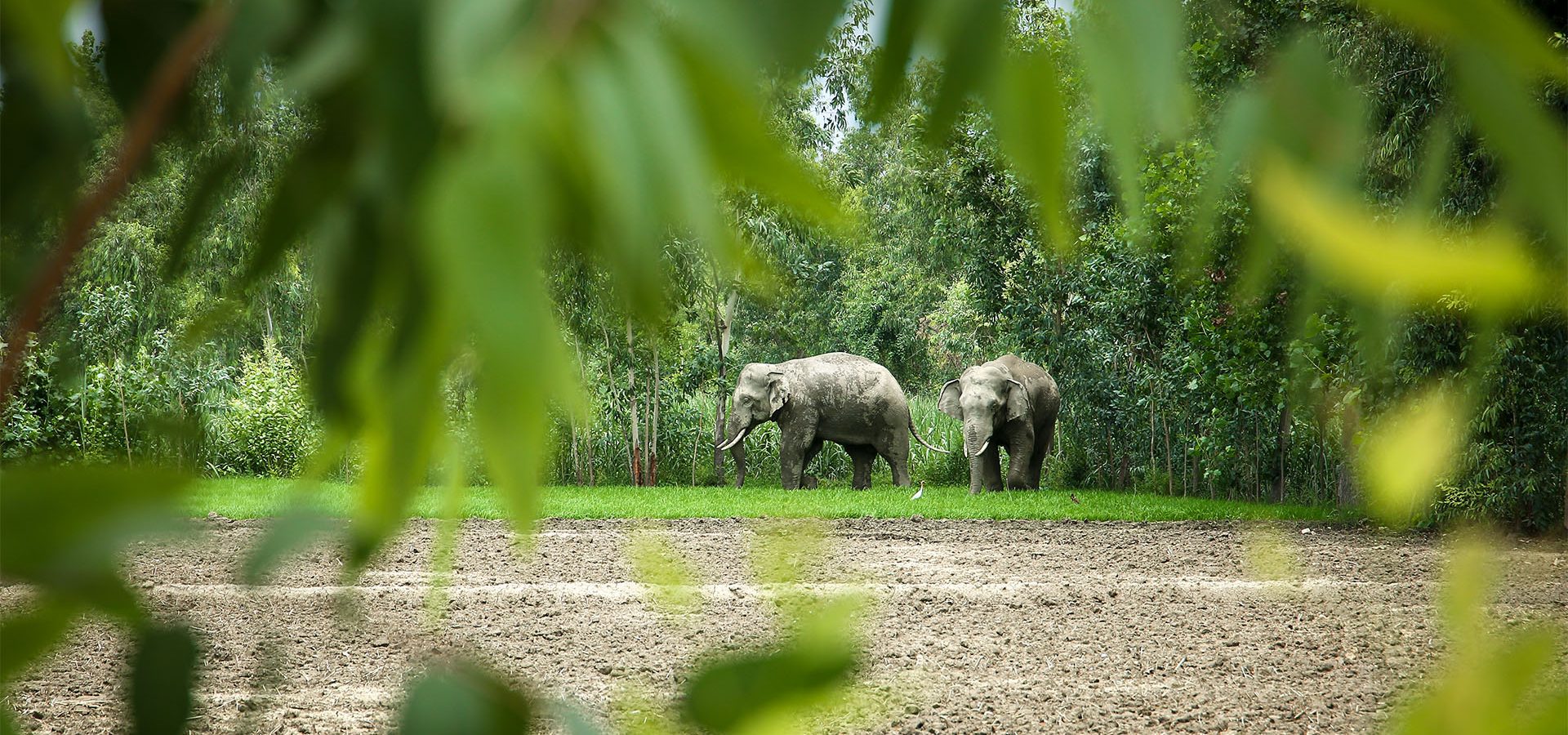India is a country rich in biodiversity and has a blend of cultures and a rich heritage that emphasizes the mythological importance of elephants that are prolific in Indian art, architecture, folklore and popular culture. Elephants are worshipped as avatars of the Elephant God “Lord Ganesh” but also, in ancient India they were used in battle by kings and were an important part of the king’s army. Over the centuries, the respect that was bestowed upon these elephants degenerated, sadly reducing them to amusement vehicles for tourists, circus animals for public entertainment and commercial revenue earners for their owners through religious or wedding processions, as begging elephants, or for use in timber yards and logging.
The same elephant which is the heritage animal of India and revered in Indian culture and mythology is ironically today, subjected to intolerance and hostility by the public. The recent incident that shocked the nation was when a pregnant wild elephant fell victim to a crude explosive concealed inside a food bait in Kerala, which resulted in the elephant’s death. The outrageous act of using crude bombs and explosives in a food bait (pineapples or coconuts) to deceive a wild animal with the intent to fatally maim it was vehemently criticized by India and the world. This exposed the rampant use of explosives for crop protection which had been in use for decades and taken the lives of thousands of wild animals like elephants, boars, sloth bears, leopards, porcupines etc.

Additionally, poisoning and electrocution is also commonly used by farmers to protect their crops from wild animals which takes a huge toll and results in the death of thousands of wild animals. In a short span of sixty days, six elephants were killed in the central Indian state of Chhattisgarh. Similarly, retaliatory killings resulted in the death of cows, jackals, monkeys and elephants in Himachal Pradesh, Kerala and Telangana.
It is indeed shocking that no safe, legal and humane methods are being applied to address crop protection from wildlife or for that matter, human wildlife conflict mitigation in these cases. After all, killing or hunting of wild animals is strictly prohibited by Indian law as per Section 9 of Wildlife Protection Act, 1972. Furthermore, the Constitution of India in Article 51A (g) provides that the fundamental duty of every citizen of India is to protect and improve the natural environment including forests, lakes, rivers and wildlife and to have compassion for living creatures.
India is the last remaining strong hold for the wild Asian elephant population with only about 25000 wild elephants remaining, mainly in the states of Kerala, Assam, Karnataka, Uttar Pradesh, Uttarakhand, Arunachal Pradesh, Tamil Nadu, Odisha, Uttarakhand, Bihar, West Bengal, Jharkhand etc. In recent times states like Chhattisgarh, Madhya Pradesh and Maharashtra which have not had presence of wild elephants previously are noticing wild herds entering and taking refuge in the state as their corridors and forests are being disturbed in their home ranges.
However, in this Indian stronghold too, the situation for Asian elephants seems dire. They face an all-encompassing threat such as shrinkage of their forest habitat, loss of corridors, habitat fragmentation, inability to access food and water, poaching for body parts and several other anthropogenic and biotic pressures that humans put on the forests. Diversion of forests/ wooded areas for development projects and linear infrastructures like rail projects, roads, transmission lines, canals etc. degradation of habitats, loss of corridors used by the elephants for their movements and conflicting cropping pattern on the edge of the forests are the main reasons for human wild elephant conflicts. Moreover, elephant habitats have been impacted by agriculture, mining, illicit timber felling, grazing, forest fires etc. resulting in severe degradation of habitats and corridors.
The uncontrolled and rapidly exploding human population, bursting at the seams is directly proportional to the increasing pressure on food and water sources, consequently resulting in growing human-elephant conflict.
Collection of Minor Forest Produce Collection (MFP) is another activity wherein contractors win auctions for contracted collection of minor forest produce like honey, berries, fruits, mahua (ingredient to brew liquor), tubers, roots, vines, tendupatha (tobacco beedi leaves), fallen antlers and such forest products. As a result, contractors unleash thousands of contracted labor to enter the forests and collect forest products. This activity erodes the nutrition available in the forest for wild animals forcing elephants and other animals to approach farms adjoining the forest for food. Here, we’ve missed the root cause of the problem and are treating merely the symptom.
Chhattisgarh Forest Department and Wildlife SOS devised innovative methods to mitigate Human Elephant Conflict (HEC). A team of expert veterinarians, elephant trackers and biologists from Wildlife SOS tracked a wild elephant herd for several weeks and finally installed a Satellite Tracking Enabled GPS Collar on the matriarch of the herd. This helps track the elephant herd that was causing concern in the Mahasamund region. Using GPS radiocollaring, regular alerts are received using the Early Warning Alert System (EWAS) which pinpoints the location and movement pattern of the elephant herd. If the herd is seen to be approaching human habitation, the concerned villages are alerted so they can make noise outside the farmland and successfully distract the elephants enough to discourage them from entering their fields. This has been successful in saving lives of both humans and elephants while preventing damage to crops and property.

The Wildlife SOS program in Chhattisgarh tackling the human elephant conflict has been successful in raising awareness and involving local stakeholders and communities to effectively address the situation. The Forest Department has provisions for offering financial compensation for the value of crop loss or property damaged caused by the elephants / other wildlife. However, while the compensation scheme is in place, the process of documentation and verification of the damage is extensive and can sometimes delay the disbursement of financial compensation to the farmers. Some farmers frustrated and discouraged by such delays, appear to take the law into their hands and use illegal and inhumane methods like crude bombs concealed in food bait, electrocution, poisoning, jaw traps etc in an attempt to take care of the problem themselves without involving the Forest Department or the authorities. While its easy to condemn these actions that kill and maim wild animals, it’s also impossible to ignore the damage to crops, fields and property of farmers whose lives are disrupted by human wildlife conflict, especially since many are subsistence farmers.
This leads us to the below questions :
1) Can the existing compensation scheme be made more efficient to ensure expeditious disbursement of compensation funds to farmers to discourage them from taking up violent and illegal solutions?
2) How are explosive substances for making crude bombs, dangerous poisons like strychnine and cyanide, so easily available to farmers & the public when Indian laws prohibit the access to guns and explosives? This needs careful and stringent regulation in the interest of national security.
3) Will empowering Range Forest Officers to approve claims be helpful to assist farmers with receiving compensation claims quicker?
4) Can Private Public Partnerships with NGOS help expedite crop compensation?
As per Wildlife Protection Act, 1972, “Elephant” is a “Wild Animal” protected under Schedule I as mentioned at Sr. No. 12-B. As per section 51 of the Act, hunting or Killing of any Elephant is punishable up to 7 years, but not less than 3 years and also levies a fine. Section 429 IPC, 1860 punishes the offender up to 5 years and liability to a fine.However the need of the hour is to support farmers with education, sensitisation about laws and work with them at the local grass roots level to develop humane alternatives in the face of man-animal conflict. Expeditious release of compensation for crops, property etc, will encourage farmers residing in forest fringes and elephant corridors to use legal & humane methods instead of violent means for self protection.
Institutions like Wildlife SOS collaborate actively with State Forest Departments to engage with local communities around protected areas, reserve forests and conflict prone areas to help implement Human-Elephant Conflict Mitigation methods. There is a need to establish stronger public private partnerships to protect people and animals.





